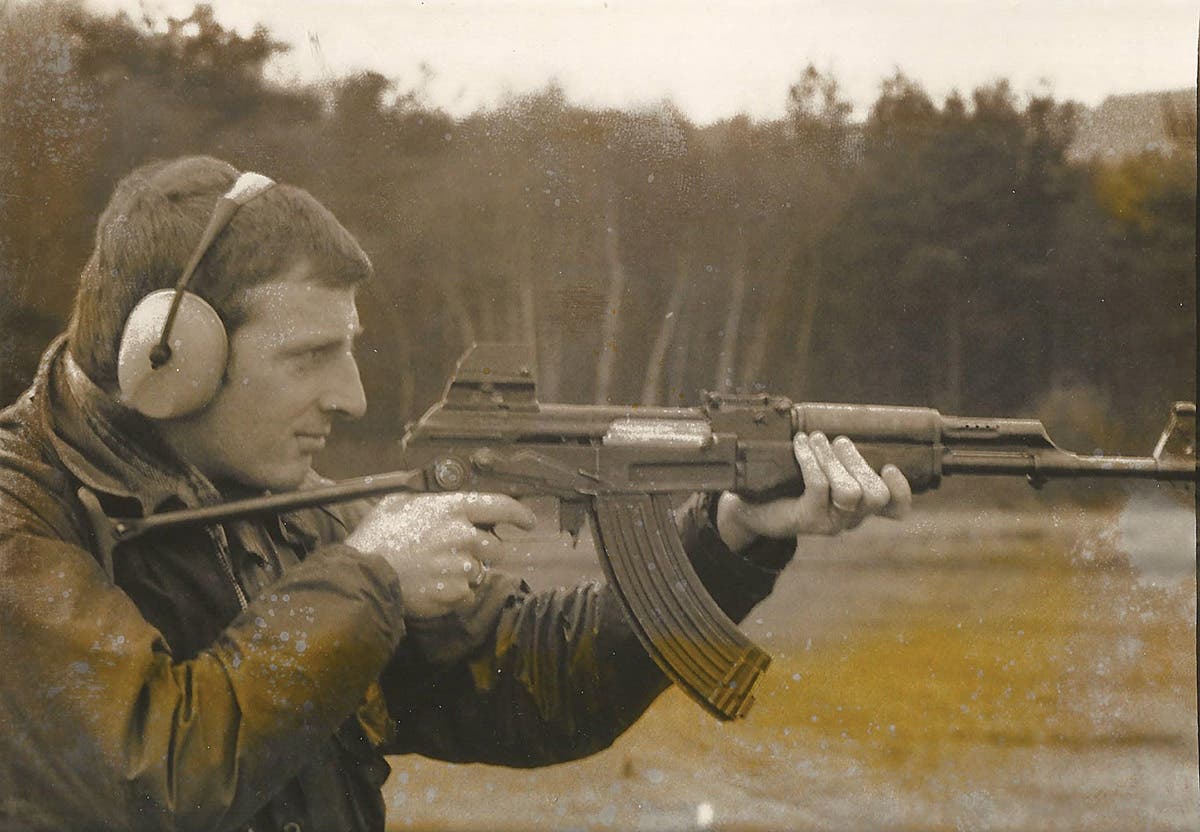Exercise Smash: A grandstand view at Studland Bay
In order for senior planners to observe amphibious exercises, the Canadian Royal Engineers built a concrete bunker at Redland Point on the west coast of Studland Bay.
After his appointment to Supreme Allied Commander in North Africa in February 1943 and the ensuing successful campaign in Sicily, followed by the landings in Italy, it was only right and proper that General Dwight Eisenhower should be elevated to higher authority. This came in December 1943 when he was appointed Supreme Allied Commander of the Allied Expeditionary Force in Europe.
His tact and diplomacy combined with his organizational skills made him the perfect choice, especially when dealing with figures from the British King George VI down to commanders in the field. In Britain his Supreme Headquarters Allied Expeditionary Force (SHAEF), known as Camp Griffess, was established in the grounds of Bushy Park in Middlesex. As more American troops poured into Britain and the date for the invasion of France neared, the intensity of the training schedule was increased.
Amphibious exercises to test skills were conducted mainly in the southwest of England, where there was an abundance of sandy beaches to replicate those across which American troops would assault. Also, the population was less dense and more widely scattered that other parts of the country. One of the training areas was Studland Bay in Dorset, where conditions were almost perfectly matched to the French coastline.
In order for senior planners to observe the exercises, the Canadian Royal Engineers built a concrete bunker at Redland Point on the west coast of Studland Bay looking eastwards. The bunker measured 90 feet in length with walls and ceiling 3 feet thick, to provide safety against accidents during live firing exercises. The engineers also built a series of bunkers, known as “Type 23” pillboxes and “dragon’s teeth” anti-tank obstacles. The large observation bunker was called “Fort Henry” and was provided with an observation slit 80 feet in length and entrances at either end set to the rear.
Live firing exercises codenamed “Smash” were conducted during April 1944 with the first, “Smash I”, being held on the 4th of the month. Things went badly wrong when several duplex-drive, DD, Valentine tanks meant to “swim” ashore, were launched but sank before reaching the beach, resulting in six deaths. Two weeks later, “Smash II” was held in the same bay, watched from the bunker by a group of observers which included King George VI, British Prime Minister Winston Churchill, General Eisenhower, General Montgomery and acting admiral Louis Mountbatten.
This was the largest live firing training exercise of the war and fortunately, things went according to plan. Seven weeks later to the day, the troops taking part in Smash II were doing it for real when they landed on Omaha Beach on June 6 in Normandy. The exercises had provided valuable lessons that were put to use in France.
Today, the area where Fort Henry stands is a pleasure beach where families enjoy relaxing visits and walk along the sand. Beach-goers who spot the bunker they are often quite surprised at the strange building. Fortunately, there are information boards with all the necessary details. The site, with a handy car park, is reached by driving along the B3351 in the direction of “Middle Beach”, which is in the care of the National Trust. Fort Henry is located a couple of hundred yards just off a footpath to the right and is freely open to access. Visitors can look out of the observation slit, with its panoramic view across Studland Bay, knowing this is where so many historical figures stood. Today they admire the view, but almost 80 years ago Eisenhower and Montgomery were looking at a much different scene. Outside, there is a memorial plaque to the men who died on Smash I where commemorative services are held.
Other indelible reminders of the war can be seen at points along the footpath, including more pillboxes and concrete dragon’s teeth. Military enthusiasts take a much more keen interest in these things than ordinary visitors. When I visited I found myself thinking how the men in 1944 would have run up the beach; the engineers practicing clearing the barbed wire entanglements and concrete obstacles and scaling the steep bluffs, looking so much like those at Omaha Beach.
Fort Henry is listed as a Grade II category historical building and as such is preserved by law. The tanks that sank during Smash I still lie at the bottom of the bay as tributes to those who lost their lives. When taken as a whole, the site fits in well with other nearby reminders, such as the concrete slipways built in nearby Swanage harbour by American engineers to load vehicles onto landing craft. Together it all adds a bit more to the role of southwest England during the war, something which is sadly being forgotten as the years pass.





